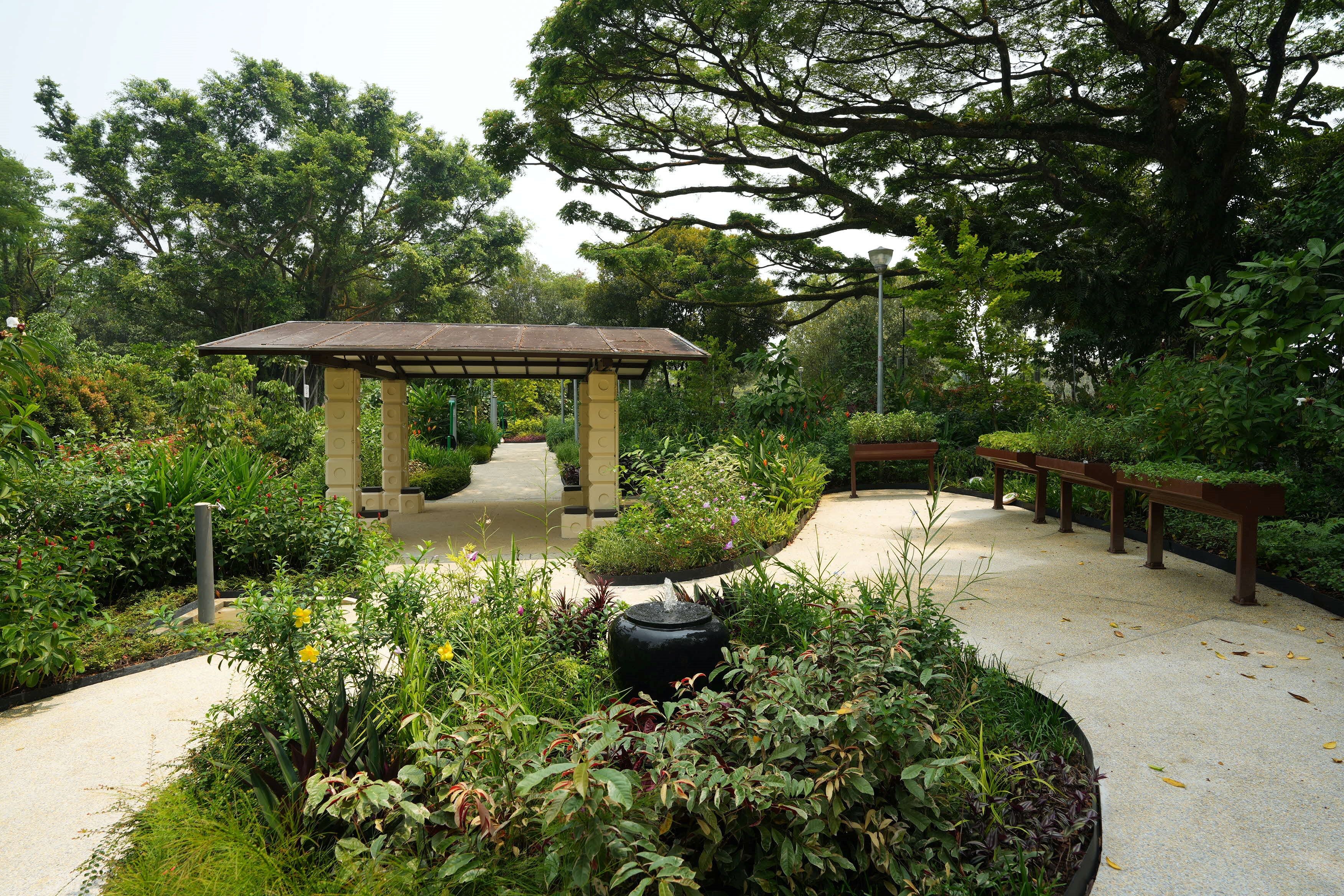Singapore parks agency adopts intentional design to make natural environments more inclusive
By Si Ying Thian
The National Parks Board (NParks) is shifting towards an evidence-based design approach and targeting more cross-agency collaborations to maximise the wellbeing of residents within the limited green spaces in the country.

GovInsider speaks to Jason Wright, director of design, and Dr Angelia Sia, deputy director for the Centre for Urban Greenery and Ecology (CUGE) at NParks to find out more about the agency's shift towards an evidence-based design approach. Image: NParks.
In Bedok Reservoir Park, a therapeutic garden offers visitors a scenic view of the reservoir under a pavilion, where elderly folks can gather for group physical activities come rain or shine. Meanwhile, an interactive rock garden offers children the chance to stack rocks in a calming environment.
Singapore launched its first therapeutic garden in 2016 and has now completed 13 such gardens, with three opening last month. It aims to build 30 of these gardens by 2030.
Such gardens have been intentionally designed and customised with features to meet the diverse needs of users, ranging from the elderly and hospital outpatients to children with special needs. Some of these features include barrier-free access, wind chimes and calming water features.

GovInsider sits down with Jason Wright, Director of Design, and Dr Angelia Sia, deputy director for the Centre for Urban Greenery and Ecology (CUGE) at NParks, to find out more about how the agency balances conservation and human-centricity in its park design, and how these gardens help meet Singapore’s needs moving forward.
Evidence-based design approach to promote wellbeing
Capitalising on emerging international evidence around the health-promoting effects of nature, Dr Sia and her research team embarked on multiple studies to validate the role of parks in promoting mental wellness for residents in Singapore in 2016.
“While we already have in place an extensive network of parks for people to enjoy, realistically there is a limit to how many more green spaces we can add to our small land area.
“This is why we decided to conduct the research and work with our design team on landscapes to maximise the wellbeing benefits of these green spaces,” says Dr Sia.
It collaborated with the Department of Psychological Medicine at National University Hospital in 2018 to study the effects of a therapeutic horticulture programme for elderly at the HortPark in southwestern part of Singapore.
The study found that such programmes improved the happiness of elderly participants and these findings have guided the team’s efforts in designing green spaces to boost mental health.
Balancing conservation and human-centricity in design
“It’s not simply a case of segregating the wild from our parks,” Wright adds, “We want to try to bring the two [conservation and human-centric design] together. We have to be mindful about how we design it to make sure it’s attractive, comfortable and beneficial to people’s wellbeing as well.”
While purely wild or forested areas might appeal to some, they can get intimidating for many, Wright says. Such spaces are also inaccessible for certain segments of the population, such as the elderly and people with disabilities.
One of NParks’ goals is to try and connect people with nature as much as possible.
“Through the work Dr Sia has done with CLM, we found that the ones who come out with the highest scores are landscapes that have a naturalistic design, but you can tell they’re partially managed by us,” according to Wright.
Wright points to the freshwater swamp forest at Singapore Botanic Gardens as one example of achieving the balance in nature and design.
Anticipating that the majority of its visitors may balk at the idea of mosquitoes and mud, NParks had put in place boardwalks and viewing decks to bring visitors closer to the swamp’s flora and fauna in relative comfort.
“We’ve designed it using biophilic design principles to make it very accessible and comfortable. We also curated all the different plant collections, but it still feels natural.”
“On one hand, you get that full nature experience. On the other hand, you get a contemplative landscape, where you can enhance your mental wellbeing.”
The role of contemplative landscapes in Singapore
To create environments that cater to the demographic needs of the population, there is a real need for collaboration across agencies, says Wright.
An increasing ageing population leads to pressure on the healthcare system, and there will be more people with dementia, social isolation, frailty and other disabilities living amongst us, he adds.
In building its new therapeutic garden at Yishun Pond Park, NParks had consulted with the rehabilitation team at Khoo Teck Puat Hospital.

The garden incorporated elements, such as a wheelchair-accessible exercise bridge, therapy stairs and a three-generational fitness corner, that made it conducive for physiotherapy and rehabilitation activities.
The agency is also working with the Housing Development Board to develop therapeutic gardens within housing estates.
Additionally, NParks has a training arm, led by CUGE, which aims to enhance private-sector capabilities in biophilic design principles and therapeutic horticulture. NParks has published on its website these guidelines around designing contemplative landscapes and therapeutic gardens.
“We’re hoping to mainstream this research and apply it to a lot more sites outside of our parks and gardens… So far, we’re still in the early stage of hand-holding, but we hope it becomes adopted and grows in the wider industry,” Wright says.
NParks is a key supporting partner of Healthier SG, Singapore’s nationwide healthcare transformation plan that aims to drive preventive and population health.
